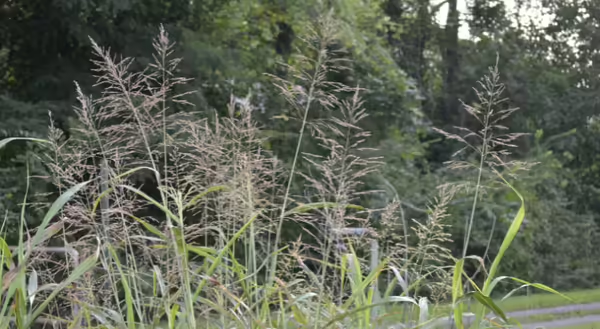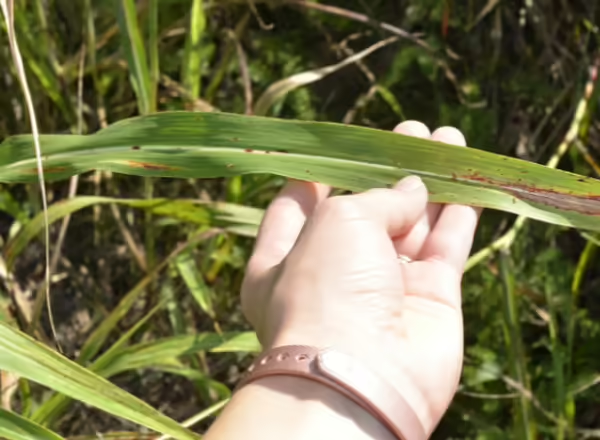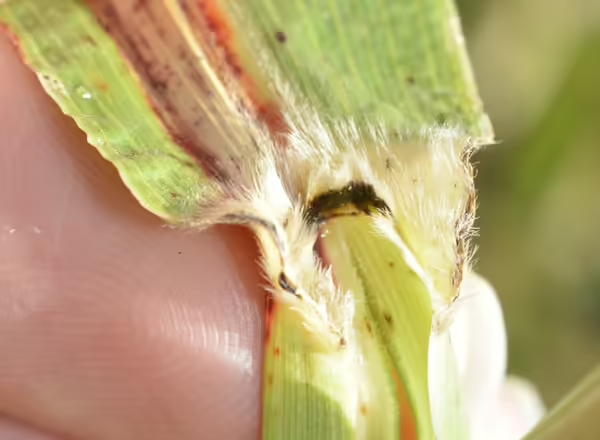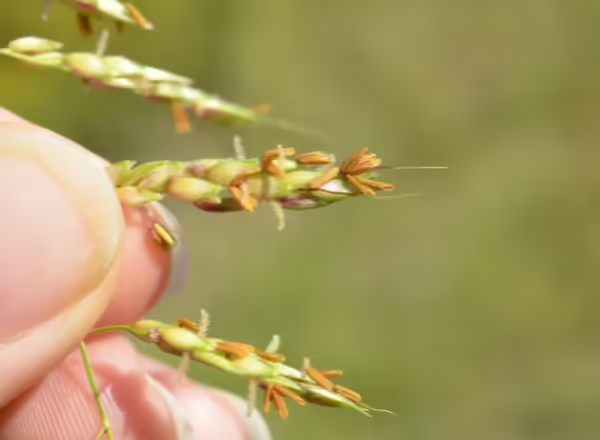
Summer is here, which brings a very busy programming schedule. In the past few weeks I’ve driven across the five counties I work in to deliver youth programs at local libraries. A lot of time on the road means I’m paying more attention to what’s growing on our roadsides. Last week the grass I saw most often was Johnsongrass, which has started to bloom in this summer heat. Johnsongrass is an invasive grass found all along the roadsides in southern Illinois.
Let’s look at how and where it grows, how to tell it apart from other grasses, and methods for stopping its spread.
Preferred habitat
Johnsongrass, Sorghum halepense, is a warm-season grass that grows in sunny, disturbed areas. As a warm-season grass, it starts up its growth in late spring and flowers in the summer. Johnsongrass can be found in fields, where it can reduce crop yields, as well as on roadsides and in prairie restorations, where it can outcompete native vegetation. I’ve even seen it in lawns and as a weed in flower gardens in rural southern Illinois. You can find it in every county in the southern third of the state, many of the counties of central Illinois, and even up in the Chicago region. Check out the current reported distribution here.

How to identify
Johnsongrass is a large grass that typically grows 4 to 8 feet tall. Its leaves are about 1 inch wide and can be several feet long. The leaves are very sharp and can give people papercuts if they work around this grass without wearing gloves and long sleeves. The leaves have a prominent white midrib, or vein, down the center of the leaves. The ligule, found at the base of the leaf blade, is made up of velvety hairs. Johnsongrass stems are glaucous, which means they have a white coating that you can rub off, which acts like a sunscreen.
When it blooms, Johnsongrass produces a panicle inflorescence, a branched flowering cluster, that can be more than a foot tall. Its spikelets, the flowering part of the grass, have pointed tips and can have awns, which look like bristles but are attached to the tips of the spikelets.



Regulations and management
Johnsongrass is regulated as a noxious weed in Illinois under the Illinois Noxious Weed Law.
Unfortunately, this grass is difficult to control because of its large rhizomatous root system. This means that mowing alone is not enough to eradicate this grass, although it can be used as a tool to prevent it from flowering and spreading more seed. It also means that any tilling must be done mindfully to prevent moving rhizomes from an infested area to an uninfested area.
Herbicide can be applied when the plant is over 18 inches tall until you see the first signs of flowering. Suggested herbicides and rates can be found at extension.illinois.edu/invasives/invasive-johnsongrass. Always read and follow the herbicide label before treatment.
A single management tool and single treatment is not enough to eradicate Johnsongrass. Repeated treatments and integrated methods, such as mowing combined with herbicide, will be needed to work towards eradication.
Want a closer look? Check out this one minute identification video!
Need a refresher on grass identification terms? Check out this blog post!
Thank you for reading!
Never miss a new post! Subscribe to our email list to get updates each time a new post is available.
Give us feedback! How helpful was this information (click one): Very helpful | Somewhat helpful | Not very helpful
ABOUT THE AUTHOR: Erin Garrett is a Natural Resources, Environment, and Energy Educator for University of Illinois Extension serving Alexander, Johnson, Massac, Pulaski, and Union counties. Erin develops and delivers high impact programming to adults and youth to help them develop an appreciation for natural resources and to empower them to make small changes to positively impact the environment. Erin’s programming focuses on why homeowners should consider choosing native plants, how to support native pollinators, how to identify grasses, how to identify and manage invasive species, and developing an appreciation for prairie ecosystems.